NOUS RESPECTONS VOTRE VIE PRIVÉE
Edmund Optics utilise des cookies pouroptimiser et améliorer les fonctionnalités et le contenu de notre site Web.Cliquez sur « OK » pour une expérience utilisateur complète. Vouspouvez obtenir des informations supplémentaires sur les cookies que nous utilisonsen cliquant sur le bouton « Détails ». Nous ne vendons PAS vosdonnées provenant des cookies marketing, nous les utilisons UNIQUEMENT pouraméliorer VOTRE expérience avec Edmund Optics.
| Nom | Fournisseur | Finalité | Durée maximale de conservation | Type |
|---|---|---|---|---|
| __lc_cid | LiveChat | Nécessaire à la fonctionnalité de la boîte de discussion du site web. | 400 jours | Cookie HTTP |
| __lc_cst | LiveChat | Nécessaire à la fonctionnalité de la boîte de discussion du site web. | 400 jours | Cookie HTTP |
| #:state | Livechat | Nécessaire pour la fonctionnalité de la boîte de dialogue du site Web. | Persistant | Stockage local HTML |
| __cf_bm [x2] | edmundoptics.com eogo.edmundoptics.com | Ce cookie est utilisé pour distinguer les humains des robots. Ceci est bénéfique pour le site web afin de créer des rapports valides sur l'utilisation du leur site. | 1 jour | Cookie HTTP |
| QuoteID | edmundoptics.fr | Enregistre l'identifiant de votre panier de devis. | 14 jours | Cookie HTTP |
| BIGipServer# | eogo.edmundoptics.com | Utilisé pour distribuer le trafic du site web sur plusieurs serveurs afin d'optimiser les temps de réponse. | Session | Cookie HTTP |
| rc::a | Ce cookie est utilisé pour distinguer les humains des robots. Ceci est bénéfique pour le site web afin de créer des rapports valides sur l'utilisation du leur site. | Persistant | Stockage local HTML | |
| rc::c | Ce cookie est utilisé pour distinguer les humains des robots. | Session | Stockage local HTML | |
| li_gc | Stocke l'autorisation d'utilisation de cookies pour le domaine actuel par l'utilisateur | 180 jours | Cookie HTTP | |
| AWSALB [x2] | productimages.edmundoptics.com www.edmundoptics.fr | Enregistre quel groupe de serveurs sert le visiteur. Ceci est utilisé dans le contexte de l'équilibrage de charge afin d'optimiser l'expérience utilisateur. | 7 jours | Cookie HTTP |
| AWSALBCORS [x2] | productimages.edmundoptics.com www.edmundoptics.fr | Enregistre quel groupe de serveurs sert le visiteur. Ceci est utilisé dans le contexte de l'équilibrage de charge afin d'optimiser l'expérience utilisateur. | 7 jours | Cookie HTTP |
| jsV | service.mtcaptcha.com | These cookies are used to secure the website from unwanted bots and automated scripts and help verify human users. | Session | Cookie HTTP |
| mtv1ConfSum | service.mtcaptcha.com | https://www.mtcaptcha.com/faq-cookie-declaration | Session | Cookie HTTP |
| mtv1Pulse | service.mtcaptcha.com | https://www.mtcaptcha.com/faq-cookie-declaration | Session | Cookie HTTP |
| .AspNetCore.Antiforgery.# | www.edmundoptics.fr | Aide à prévenir des attaques dangereuses du type Cross Site Request Forgery (CSRF) | Session | Cookie HTTP |
| .AspNetCore.Mvc.CookieTempDataProvider | www.edmundoptics.fr | Conserve la configuration des paramètres des utilisateurs à travers les demandes de page. | Session | Cookie HTTP |
| CookieConsent | Cookiebot | Stocke l'autorisation d'utilisation de cookies pour le domaine actuel par l'utilisateur | 1 année | Cookie HTTP |
| UMB_SESSION | www.edmundoptics.fr | Enregistre le préfixe du domaine pour déterminer s'il contient des propriétés d'URL https ou http. | Session | Cookie HTTP |
| Nom | Fournisseur | Finalité | Durée maximale de conservation | Type |
|---|---|---|---|---|
| __oauth_redirect_detector | LiveChat | Permet au site Web de reconnaître le visiteur afin d’optimiser la fonctionnalité de la boîte de dialogue. | 1 jour | Cookie HTTP |
| @@lc_auth_token:3b0f44ba-5eb5-4bb1-a9e1-2214776a186b | Livechat | En attente | Persistant | Stockage local HTML |
| @@lc_ids | Livechat | Identifies the visitor across devices and visits, in order to optimize the chat-box function on the website. | Persistant | Stockage local HTML |
| chatEngaged | edmundoptics.fr | Indique si l'utilisateur a interagi avec la boîte de discussion du site web afin de déterminer s'il doit recevoir des invitations à la discussion. | 14 jours | Cookie HTTP |
| Nom | Fournisseur | Finalité | Durée maximale de conservation | Type |
|---|---|---|---|---|
| _livechat_has_visited | Livechat | Identifie le visiteur à travers des appareils et des visites, afin d'optimiser la fonction de boîte de dialogue du site Web. | Persistant | Stockage local HTML |
| _conv_r | Convert Insight | Ce cookie est utilisé en tant que référence qui enregistre le profil du visiteur. Il est souvent écrasé lorsque le visiteur revient sur le site, pour pouvoir recueillir et enregistrer de nouvelles informations sur lui. | 180 jours | Cookie HTTP |
| _conv_s | Convert Insight | Ce cookie contient une chaine identifiant pour la session en cours, qui contient des informations non personnelles quant aux sous-pages auxquelles accède le client ; ces informations sont utilisées pour optimiser l'expérience visiteur. | 1 jour | Cookie HTTP |
| _conv_sptest | Convert Insight | Ce cookie contient une chaine identifiant pour la session en cours, qui contient des informations non personnelles quant aux sous-pages auxquelles accède le client ; ces informations sont utilisées pour optimiser l'expérience visiteur. | Session | Cookie HTTP |
| _conv_v | Convert Insight | Ce cookie est utilisé pour identifier la fréquence des visites et le temps que passe le visiteur sur le site. Il sert aussi à déterminer combien de sous-pages le visiteur visite sur un site, et lesquelles. Ces informations peuvent être utilisées par le site pour optimiser le domaine et ses sous-pages. | 6 mois | Cookie HTTP |
| _ga | Enregistre un identifiant unique qui est utilisé pour générer des données statistiques sur la façon dont le visiteur utilise le site web. | 25 mois | Cookie HTTP | |
| _ga_# | Utilisé par Google Analytics our recueillir des données sur le nombre de fois qu'un utilisateur a visité le site web ainsi que les dates de la première et de la plus récente visite. | 25 mois | Cookie HTTP | |
| ce_diff_time | edmundoptics.fr | Utilisé par Crazy Egg pour compenser le temps à des fins d'analyse. | 14 jours | Cookie HTTP |
| ce_ip_address | edmundoptics.fr | Utilisé par Crazy Egg pour stocker l'adresse IP de l'utilisateur. | 14 jours | Cookie HTTP |
| Nom | Fournisseur | Finalité | Durée maximale de conservation | Type |
|---|---|---|---|---|
| conv_rand | Convert Insight | Ce cookie est utilisé par l’opérateur du site web dans le cadre de tests multi-variables. C’est un outil utilisé pour combiner ou changer le contenu du site web. Cela permet au site web de trouver la meilleure variation/version du site. | Persistant | Stockage local HTML |
| lastExternalReferrer | Meta Platforms, Inc. | Détecte comment l'utilisateur a atteint le site web en enregistrant sa dernière adresse URL. | Persistant | Stockage local HTML |
| lastExternalReferrerTime | Meta Platforms, Inc. | Détecte comment l'utilisateur a atteint le site web en enregistrant sa dernière adresse URL. | Persistant | Stockage local HTML |
| IDE | Utilisé par Google DoubleClick pour enregistrer et signaler les actions de l'utilisateur du site web après avoir visualisé ou cliqué sur une des annonces de l'annonceur, dans le but de mesurer l'efficacité d'une annonce et de présenter des annonces ciblées à l'utilisateur. | 400 jours | Cookie HTTP | |
| pagead/landing [x2] | Collecte des données sur le comportement des visiteurs à partir de plusieurs sites web afin de présenter des publicités plus pertinentes. Cela permet également au site web de limiter le nombre de fois où la même publicité est présentée au visiteur. | Session | Pixel de suivi | |
| test_cookie | Utilisé pour vérifier si le navigateur de l'utilisateur accepte les cookies. | 1 jour | Cookie HTTP | |
| __tld__ | Wisepops | Utilisé pour suivre les visiteurs sur plusieurs sites Web, afin de présenter des publicités pertinentes en fonction des préférences du visiteur. | Session | Cookie HTTP |
| _fbp | Meta Platforms, Inc. | Utilisé par Facebook pour diffuser une série de produits publicitaires tels que les enchères en temps réel d'annonceurs tiers. | 3 mois | Cookie HTTP |
| _gaexp | edmundoptics.fr | Ce cookie est utilisé par Google Analytics pour déterminer si le visiteur est impliqué dans ses expériences de marketing. | 14 jours | Cookie HTTP |
| _gcl_au | Utilisé par Google AdSense pour expérimenter l'efficacité de la publicité sur de divers sites Web en utilisant leurs services. | 3 mois | Cookie HTTP | |
| gwcc | edmundoptics.fr | Permet les Google Website Call Conversions - Cela enregistre si le visiteur a cliqué sur « Téléphone » dans la sous-page « Contactez-nous ». Ces informations sont utilisées à des fins de statistique et de marketing. | 14 jours | Cookie HTTP |
| m | edmundoptics.fr | Pixel de suivi utilisé par une société sud-coréenne, Naver Analytics, pour suivre l'engagement sur des sites web | 14 jours | Cookie HTTP |
| NWB | edmundoptics.fr | Utilisé par une société sud-coréenne, Naver Analytics, pour l'analyse du web qui suit et rapporte le trafic sur le site | 14 jours | Cookie HTTP |
| NWB_LEGACY | edmundoptics.fr | Utilisé par une société sud-coréenne, Naver Analytics, pour l'analyse du web qui suit et rapporte le trafic sur le site | 14 jours | Cookie HTTP |
| wcs_bt | edmundoptics.fr | Utilisé par une société sud-coréenne, Naver Analytics, pour l'analyse web intersites | 14 jours | Cookie HTTP |
| wisepops [x2] | Wisepops | Utilisé dans le cadre de contenu publicitaire pop-up sur le site web – Le cookie détermine quelles publicités doivent être montrées au visiteur, ainsi que pour assurer que les mêmes publicités ne sont pas montrées plus que prévues. | 400 jours | Cookie HTTP |
| wisepops_props [x2] | Wisepops | Utilisé dans le cadre de contenu publicitaire pop-up sur le site web – Le cookie détermine quelles publicités doivent être montrées au visiteur, ainsi que pour assurer que les mêmes publicités ne sont pas montrées plus que prévues. | Session | Cookie HTTP |
| wisepops_session [x2] | Wisepops | Utilisé dans le cadre de contenu publicitaire pop-up sur le site web – Le cookie détermine quelles publicités doivent être montrées au visiteur, ainsi que pour assurer que les mêmes publicités ne sont pas montrées plus que prévues. | Session | Cookie HTTP |
| wisepops_visitor [x2] | Wisepops | Used in context with pop-up advertisement-content on the website. The cookie determines which ads the visitor should be shown, as well as ensuring that the same ads does not get shown more than intended. | 400 jours | Cookie HTTP |
| wisepops_visits [x2] | Wisepops | Utilisé dans le cadre de contenu publicitaire pop-up sur le site web – Le cookie détermine quelles publicités doivent être montrées au visiteur, ainsi que pour assurer que les mêmes publicités ne sont pas montrées plus que prévues. | 400 jours | Cookie HTTP |
| NID | Enregistre un identifiant unique qui identifie l'appareil d'un utilisateur qui revient. L'ID est utilisé pour des publicités ciblées. | 6 mois | Cookie HTTP | |
| pagead/1p-user-list/# | Repère si l'internaute a montré de l'intérêt pour des produits ou des événements spécifiques sur plusieurs sites web et détecte la façon dont l'internaute navigue entre les sites. Cela est utilisé pour mesurer les efforts publicitaires et facilite le paiement des frais de référence entre les sites web. | Session | Pixel de suivi | |
| 1.gif | Usercentrics GmbH | Utilisé pour compter le nombre de sessions sur le site web, nécessaire pour optimiser la livraison des produits CMP. | Session | Pixel de suivi |
| bcookie | Utilisé par le service de réseau social LinkedIn pour suivre l'utilisation des services intégrés. | 1 année | Cookie HTTP | |
| lidc | Utilisé par le service de réseau social LinkedIn pour suivre l'utilisation des services intégrés. | 1 jour | Cookie HTTP | |
| wisepops_session_id | Wisepops | Used in context with pop-up advertisement-content on the website. The cookie determines which ads the visitor should be shown, as well as ensuring that the same ads does not get shown more than intended. | Session | Stockage local HTML |
| wisepops_session_landing_url | Wisepops | Used in context with pop-up advertisement-content on the website. The cookie determines which ads the visitor should be shown, as well as ensuring that the same ads does not get shown more than intended. | Session | Stockage local HTML |
| wisepops_session_referrer | Wisepops | Used in context with pop-up advertisement-content on the website. The cookie determines which ads the visitor should be shown, as well as ensuring that the same ads does not get shown more than intended. | Session | Stockage local HTML |
| wisepops-pageview_id | Wisepops | Used in context with pop-up advertisement-content on the website. The cookie determines which ads the visitor should be shown, as well as ensuring that the same ads does not get shown more than intended. | Session | Stockage local HTML |
| wisepops-uses-attention | Wisepops | Used in context with pop-up advertisement-content on the website. The cookie determines which ads the visitor should be shown, as well as ensuring that the same ads does not get shown more than intended. | Session | Stockage local HTML |
| _mkto_trk | Marketo | Contient des données sur le comportement des visiteurs et l'interaction avec le site Web. Ceci est utilisé par le service de marketing par courrier électronique Marketo.com, qui permet au site Web de cibler les visiteurs par courrier électronique. | 2 années | Cookie HTTP |
| #-# | YouTube | Used to track user’s interaction with embedded content. | Session | Stockage local HTML |
| 1ef418480db4f | YouTube | En attente | Session | Stockage local HTML |
| 4dc98a-826c26f | YouTube | En attente | Session | Stockage local HTML |
| -811edb-7d148607 | YouTube | En attente | Session | Stockage local HTML |
| b331da1a7d1a | YouTube | En attente | Session | Stockage local HTML |
| iU5q-!O9@$ | YouTube | Enregistre un identifiant unique pour conserver des statistiques sur les vidéos de YouTube vues par l'utilisateur. | Session | Stockage local HTML |
| LAST_RESULT_ENTRY_KEY | YouTube | Utilisé pour suivre l'interaction de l'utilisateur avec le contenu intégré. | Session | Cookie HTTP |
| LogsDatabaseV2:V#||LogsRequestsStore | YouTube | Stores the user's video player preferences using embedded YouTube video | Persistant | IndexedDB |
| nextId | YouTube | Utilisé pour suivre l'interaction de l'utilisateur avec le contenu intégré. | Session | Cookie HTTP |
| remote_sid | YouTube | Nécessaire pour la mise en place et le fonctionnement du contenu vidéo de YouTube sur le site web. | Session | Cookie HTTP |
| requests | YouTube | Utilisé pour suivre l'interaction de l'utilisateur avec le contenu intégré. | Session | Cookie HTTP |
| ServiceWorkerLogsDatabase#SWHealthLog | YouTube | Nécessaire pour la mise en place et le fonctionnement du contenu vidéo de YouTube sur le site web. | Persistant | IndexedDB |
| TESTCOOKIESENABLED | YouTube | Utilisé pour suivre l'interaction de l'utilisateur avec le contenu intégré. | 1 jour | Cookie HTTP |
| VISITOR_INFO1_LIVE | YouTube | Essaie d'estimer la bande passante des utilisateurs sur les pages avec vidéos YouTube intégrées. | 180 jours | Cookie HTTP |
| YSC | YouTube | Enregistre un identifiant unique pour tenir des statistiques sur les vidéos de YouTube que l'utilisateur a vues. | Session | Cookie HTTP |
| yt.innertube::nextId | YouTube | Enregistre un identifiant unique pour conserver des statistiques sur les vidéos de YouTube vues par l'utilisateur. | Persistant | Stockage local HTML |
| yt.innertube::requests | YouTube | Enregistre un identifiant unique pour conserver des statistiques sur les vidéos de YouTube vues par l'utilisateur. | Persistant | Stockage local HTML |
| ytidb::LAST_RESULT_ENTRY_KEY | YouTube | Stocke les préférences de lecture vidéo de l'utilisateur pour les vidéos YouTube incorporées | Persistant | Stockage local HTML |
| YtIdbMeta#databases | YouTube | Utilisé pour suivre l'interaction de l'utilisateur avec le contenu intégré. | Persistant | IndexedDB |
| yt-remote-cast-available | YouTube | Stocke les préférences de lecture vidéo de l'utilisateur pour les vidéos YouTube incorporées | Session | Stockage local HTML |
| yt-remote-cast-installed | YouTube | Enregistre les préférences de l'utilisateur en matière de lecteur vidéo pour les vidéos YouTube intégrées | Session | Stockage local HTML |
| yt-remote-connected-devices | YouTube | Enregistre les préférences de l'utilisateur en matière de lecteur vidéo pour les vidéos YouTube intégrées | Persistant | Stockage local HTML |
| yt-remote-device-id | YouTube | Enregistre les préférences de l'utilisateur en matière de lecteur vidéo pour les vidéos YouTube intégrées | Persistant | Stockage local HTML |
| yt-remote-fast-check-period | YouTube | Enregistre les préférences de l'utilisateur en matière de lecteur vidéo pour les vidéos YouTube intégrées | Session | Stockage local HTML |
| yt-remote-session-app | YouTube | Enregistre les préférences de l'utilisateur en matière de lecteur vidéo pour les vidéos YouTube intégrées | Session | Stockage local HTML |
| yt-remote-session-name | YouTube | Enregistre les préférences de l'utilisateur en matière de lecteur vidéo pour les vidéos YouTube intégrées | Session | Stockage local HTML |
| Nous n'utilisons pas de cookies de ce type. |
La loi stipule que nous ne pouvons stocker des cookies sur votre appareil que s’ils sont strictement nécessaires au fonctionnement de ce site. Pour tous les autres types de cookies, nous avons besoin de votre permission.
Ce site utilise différents types de cookies. Certains cookies sont placés par les services tiers qui apparaissent sur nos pages.
À tout moment, vous pouvez modifier ou retirer votre consentement dès la Déclaration relative aux cookies sur notre site web.
En savoir plus sur qui nous sommes, comment vous pouvez nous contacter et comment nous traitons les données personnelles veuillez voir notre Politique confidentialité.
Veuillez indiquer l'identifiant de votre consentement et la date à laquelle vous nous avez contactés concernant votre consentement.














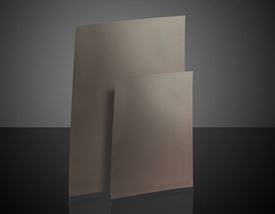

 STEP:step
STEP:step
 Plans Mécaniques PDF:pdf
Plans Mécaniques PDF:pdf
 IGES:igs
IGES:igs
 Spécifications:pdf
Spécifications:pdf
 eDrawing:eprt
eDrawing:eprt
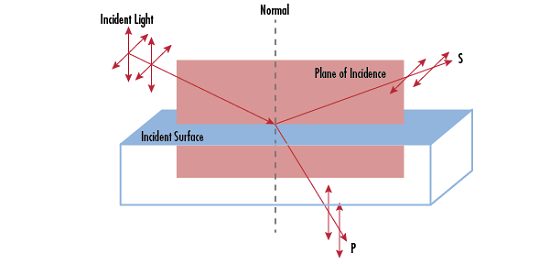


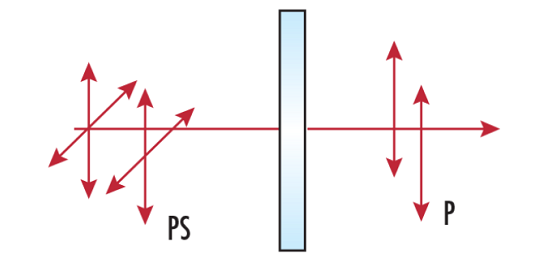
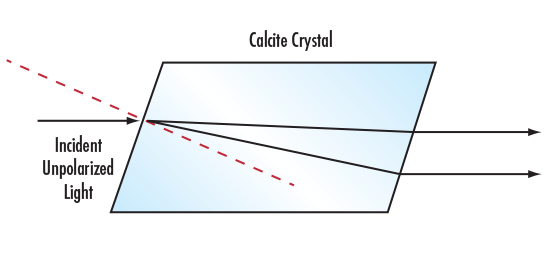





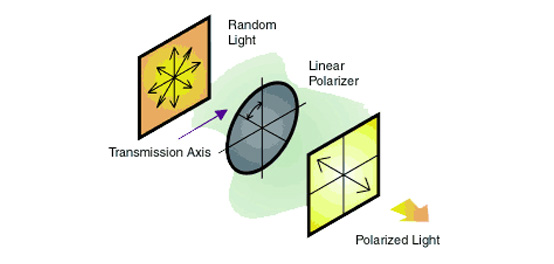


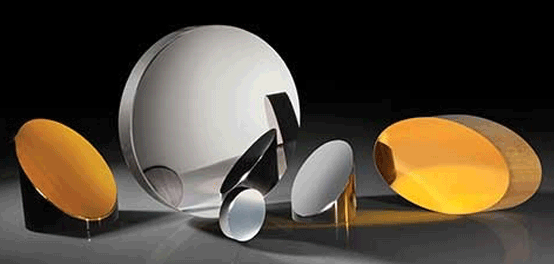




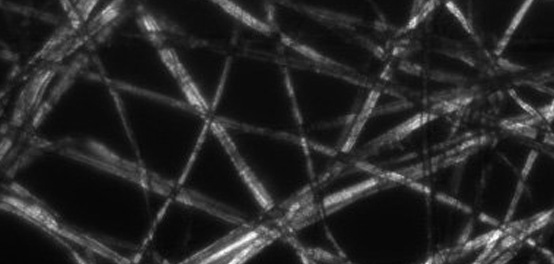


ou consulter les numéros d’autres pays
facile à utiliser
entrer les numéros de stock pour commencer
Copyright 2023 | Edmund Optics, Ltd Unit 1, Opus Avenue, Nether Poppleton, York, YO26 6BL, UK
L'entreprise Edmund Optics GmbH en Allemagne agit comme un mandataire d'Edmund Optics Ltd au Royaume-Uni. Le titulaire du contrat est Edmund Optics Ltd au Royaume-Uni.